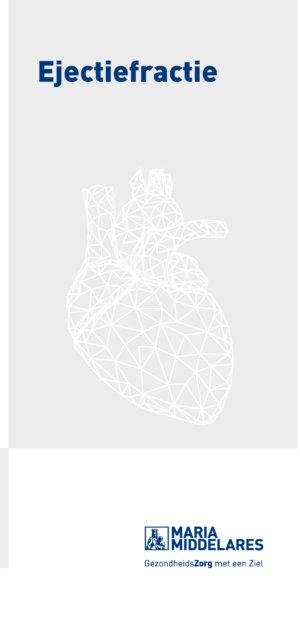Ejection fraction
What is it?
What is it?This test determines the heart's pumping function. This can be important if you have heart problems, but also if you take certain medications.During the test, the quantity of blood that is pumped per heartbeat is calculated. That is the ejection fraction.
Course of the procedure
Course of the procedurePregnancy and breastfeeding
Are you pregnant or do you think you may be pregnant? Or are you breastfeeding? Please tell the physician before the injection. The test will not be performed if you are pregnant. If you are not sure whether you are pregnant or not, the test will be postponed until you are certain.
If you are breastfeeding, make sure to discuss this with the physician before the test. You will receive additional instructions about how to avoid unnecessary radiation exposure to your child.
Preparation for the test
No fasting is required for this test. There is no special preparation needed.
Test procedure
In order to visualise the blood pumping through the heart, a small quantity of radioactive material is administered by an intravenous injection in the arm. The scan is taken immediately after the injection. Electrodes are placed on your chest in order to register an electrocardiogram (ECG) during the test. The duration of the scan depends on the person, but takes, on average, about 15 minutes.
After the procedure
If you are not admitted to the hospital, you can resume your normal activities after the test.
Safety and radiation
Safety and radiationThere are essentially no side effects: the injected product causes no abnormal sensations and only in very rare cases causes (very mild) allergic reactions. The injected radioactive material does constitute a dose of radiation, but it is very small (about as much as for a regular CT scan).
The quantity of radiation that you are exposed to during the test is not higher or lower depending on the number of images taken.
The radioactive material will have disappeared almost completely from your body 12 hours after the test.
It is recommended that children younger than the age of 6 do not sit on your lap for more than half an hour during the first six hours after the test. Playing, feeding, changing sheets and nappies and other daily activities are no problem.
Also do your best to avoid long (longer than one hour) of close contact (less than one metre) with pregnant women during the first six hours.
Results
ResultsWe prepare a report of the test. That report and the images are digitally available to the physician who requested the test.
Leaflet
LeafletOnly available in Dutch:

Ejectiefractie
DownloadCentres and specialist areas
Centres and specialist areas
Something wrong or unclear on this page? Report it.
Latest publication date: 13/08/2024
Supervising author: Dr Van Den Bossche Bieke




